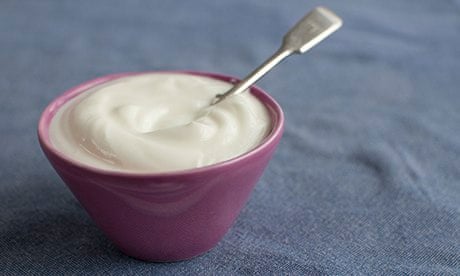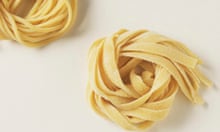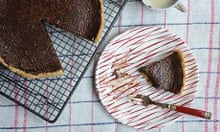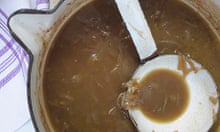Difficulty: Fairly easy; just needs a bit of kit
A yoghurt-maker is one of those kitchen gadgets no one really needs. Buy one if you like, but it will just give you one more thing to wipe grease off.
All you need to make yoghurt is something to heat liquid in, something to tell you its temperature, something to keep it warm, and something to hold it in the fridge. In other words, a saucepan, a thermometer, a wide‑mouthed vacuum flask or two and some jars. That, and you'll also need some "starter culture", bacteria that will convert plain milk into tangy, creamy deliciousness.
You can buy starter in dried form online or in health food shops, but the easiest source is wherever you already get your groceries. A small pot of live, plain, preferably organic yoghurt (check the label for "made with live cultures" or a list of "live bacteria") will contain enough bacteria to transform a litre or more of milk. While you're at it, pick up 500ml or a litre of milk – cows' or goats', pasteurised or UHT. Full-fat, semi, skimmed: they'll all make yoghurt, though of decreasing thickness. If you like your yoghurt extra-creamy, you could also invest in some powdered milk.
Back home, let the ready-made yoghurt come to room temperature, pour the milk into a saucepan and whisk in 25g powdered milk (if using) for every 500ml of milk. If this is pasteurised, heat it to 85C, stirring occasionally, then leave it to cool to about 46C (this process results in thicker yoghurt, as well as killing some unwanted bacteria). If UHT, simply warm it to 46C. Then whisk or stir in the live yoghurt – about 3 tbsp for every 500ml.
Before the mixture can cool, pour it into your warmed Thermos(es) and screw down the lid(s). Leave it for eight hours or so – or longer if you like your yoghurt thicker and stronger-tasting.
If it either tastes or smells off, chuck it away and start again. Otherwise pour it into clean jars and store it in the fridge. If you're happy with how it turns out, you can use a little of it as starter for your next batch. Freeze this if you won't be using it within the next few days.
Phil Daoust is a food writer based in England and France. He started making his own ingredients because it was more fun than shopping. twitter.com/philxdaoust











Comments (…)
Sign in or create your Guardian account to join the discussion